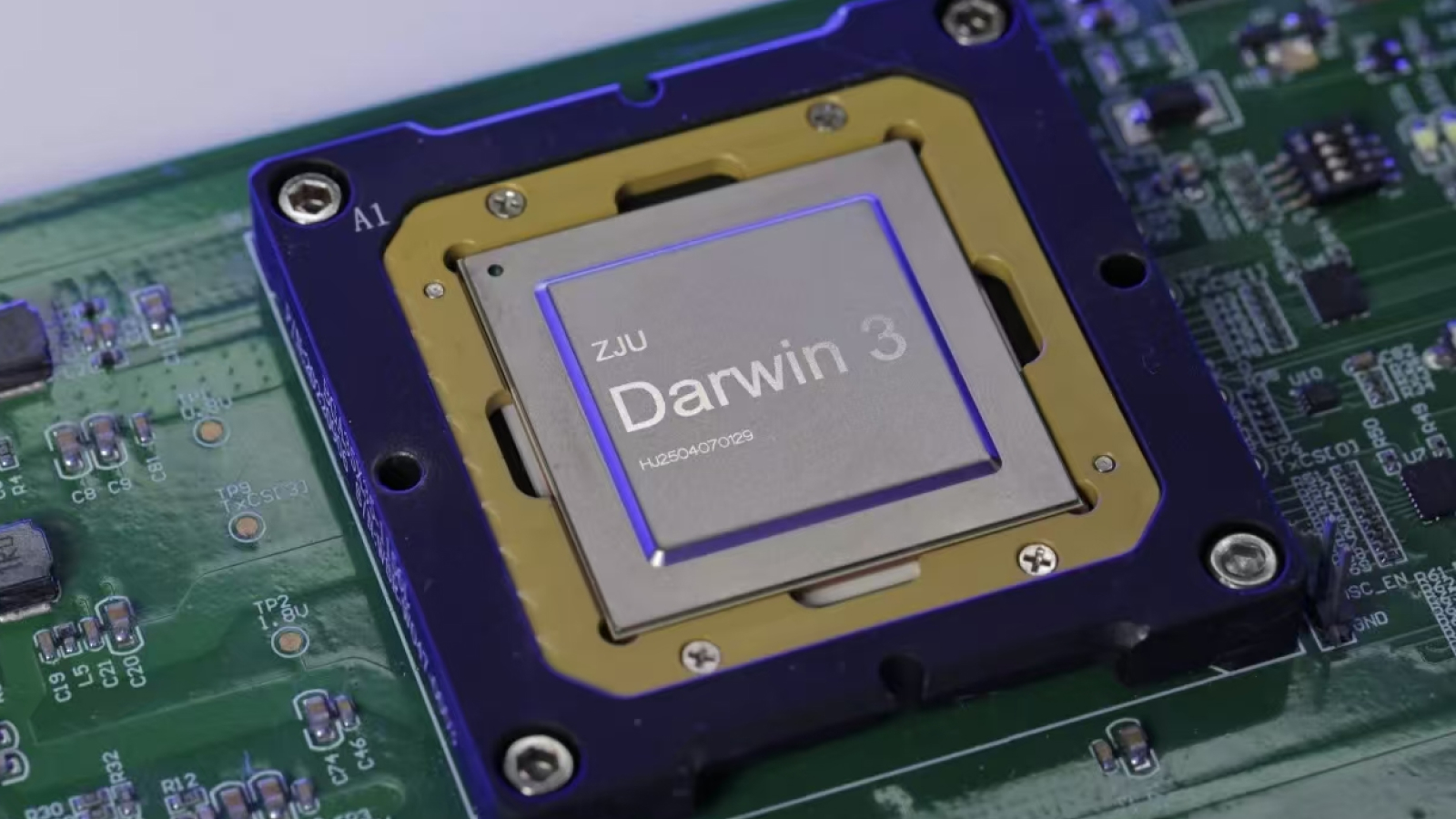China's 'Darwin Monkey' is the world's largest brain-inspired supercomputer
Darwin Monkey or 'Wukong' features over 2 billion artificial neurons and more than 100 billion synapses — similar to the neural structure of a macaque.

Scientists in China have unveiled a supercomputer built on brain-like architecture — specifically, that of a monkey.
Called Darwin Monkey or "Wukong", the system features over 2 billion artificial neurons and more than 100 billion synapses, putting it roughly on par with the neural structure of a macaque.
The researchers hope it will serve as a simulation tool for neuroscientists while also providing a stepping stone toward artificial general intelligence (AGI) — an artificial intelligence (AI) system that possesses human-like intelligence and reasoning.
Br(AI)n power
Unlike traditional artificial neural networks, which follow classical computing principles and process data via continuously changing binary values, neuromorphic systems like Darwin Monkey are driven by spiking neural networks (SNNs).
SNNs mimic how signals are transmitted between neurons in the brains of mammals, responding to electrical signals to process and transmit data through on-and-off bursts (or spikes) of activity.
A biological neuron fires an electrical pulse when the signals it receives from other neurons reach a level strong enough to trigger a response. Artificial neurons in SNNs mimic this mechanism, firing only when they've built up enough electrical input.
Get the world’s most fascinating discoveries delivered straight to your inbox.
Where software-based neural networks are a collection of machine learning algorithms arranged to emulate the human brain, SNNs physically replicate the way information moves between biological neurons. This configuration allows SNNs to process data in parallel, potentially making them more powerful than conventional supercomputer architectures.
It may also be more energy efficient: artificial neurons enter a brief rest period after each spike, during which they can't respond to new inputs. This limits how often they fire, helping to reduce overall power consumption.
Researchers say Darwin Monkey consumes just 2,000 watts of power — roughly the equivalent of an electric kettle or hairdryer — despite being powered by 960 Darwin III neuromorphic chips, each of which supports up to 2.35 million spiking neurons.
Other neuromorphic computers
The previous record-holder in neuromorphic computing was Intel's Hala Point system, which comprises 1.15 billion artificial neurons and 128 billion artificial synapses distributed over 140,544 processing cores.
Intel claims its system is capable of performing 20 quadrillion operations per second — or 20 petaops. But as there are very few neuromorphic computers currently in existence, and as they process data differently from supercomputers, it's difficult to compare them on a like-for-like basis.
In a statement, translated into English using Google Translate, the team behind Darwin Monkey said the platform had already demonstrated its capabilities in cognitive tasks such as logical reasoning, content generation and mathematical problem-solving, using an AI model developed by Chinese AI startup DeepSeek.
The system is also being used to simulate the brains of animals with varying levels of neural complexity, including zebrafish and mice, as part of broader efforts to support brain science research.
Darwin Monkey was designed by researchers from Zhejiang University and Zhejiang Lab, a research institute jointly established by the Zhejiang provincial government and Alibaba Group, a Chinese technology conglomerate.
It follows the launch of Darwin Mouse ("Mickey") in September 2020, which contains 120 million artificial neurons — the equivalent of a mouse's brain.
Owen Hughes is a freelance writer and editor specializing in data and digital technologies. Previously a senior editor at ZDNET, Owen has been writing about tech for more than a decade, during which time he has covered everything from AI, cybersecurity and supercomputers to programming languages and public sector IT. Owen is particularly interested in the intersection of technology, life and work – in his previous roles at ZDNET and TechRepublic, he wrote extensively about business leadership, digital transformation and the evolving dynamics of remote work.
You must confirm your public display name before commenting
Please logout and then login again, you will then be prompted to enter your display name.

